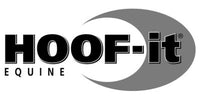Performance Horse Shoeing Tips
No matter what kind of performance horse you might happen to have, cutting, reining, roping, or pleasure, one thing is a constant fact: your horse must be in balance with his body to perform at his optimal level. It is your farrier’s job to trim and shoe your horse to allow for optimal balance.
I have been lucky with my reining cow horse, Smoke ‘em. He has never needed any corrective shoeing. I simply have my farrier trim him flat and level based on the conformation of each of his legs. I have his feet trimmed short to ensure that he moves naturally. Horses with toes that are too long or heels that are too high do not stride naturally and do not look pretty to the judges. Eventually, excessively long feet cause problems that may require correction and even rehabilitation down the road. You can compare this problem to the human athlete. If a runner wore shoes one size too small, or too large, for even one training session he would feel a lot more stress and strain in the legs than with shoes which fit properly. The same is true for your horse. The most important factor in the shoeing of your performance horse is to have him land level on the ground, You can notice this by observing your horse move at a walk. View him from the front and from the side. Does the inside or the outside of the shoe hit the ground first? Or, does he put the entire hoof down level? If his walk is level, he will most likely lope and trot level also. And, most importantly for cow horses, he will stop level also. If he does not land perfectly level his timing (and yours) will be off. This problem will only get worse as you work him at a quicker pace. Remember, all foot and leg problems intensify as the horse moves faster. The best way to make decisions about your performance horse’s shoeing needs is to watch him move from the ground, and learn to listen to your seat. If you have any tips on shoeing the performance horse please post them here and share your experience.
